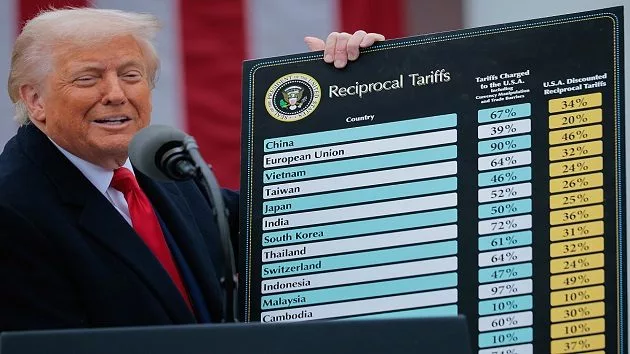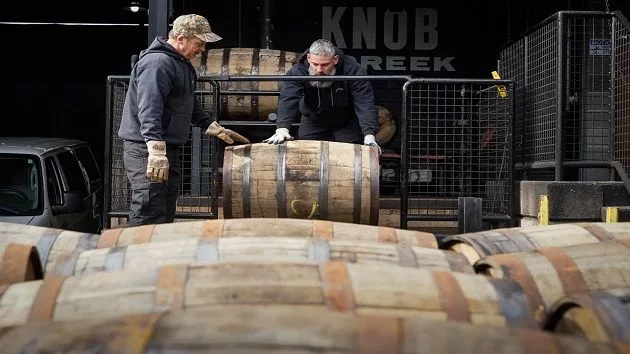
(NEW YORK) — The key to helping curb greenhouse gas emissions from the agriculture industry may be hidden just beneath the surface.
While in the past century farming has transformed to be faster and on a larger scale, the newfound efficiency came at a cost to the environment. Farmers extracted more nutrients from the soil than what was being replaced, and the fertilizers used to aid crop growth are responsible for one of the largest sources of greenhouse gas emissions from global agriculture industry, according to experts.
In the U.S. alone, the use of nitrogen fertilizers are responsible for about 195 million metric tons of greenhouse gases annually, comparable to the emissions of 41 million passenger vehicles per year, according to the Environmental Protection Agency.
Some farmers believe the solution to making the agriculture industry more environmental-friendly lies in revitalizing the soil in which they grow crops, rather than traditional methods, such as fertilizer and conventional tilling.
One of the ways to do this is the no-till method, an old practice where the soil structure is not disturbed, experts and officials say. According to the U.S. Department of Agriculture, continuous no-till practices can save money, improve soil health and conserve resources such as fuel and labor investments. Practicing no-till management for multiple years allows fields to have a higher water holding capacity than conventionally tilled fields, which is particularly important in areas prone to drought, according to the USDA.
And the agency has said that soil disturbance stimulates the microbes that release greenhouse gases into the atmosphere.
Adoption of the method, which the USDA’s Natural Resources Conservation Service has encouraged, has been increasing, about 8% from 2012 to 2017 according to the latest Census of Agriculture, and accounted for more than 100 million acres. Intensive tillage declined 35% during the same time.
‘Healing process’
It is important for farmers to look at their land and pay attention to “what it’s telling you,” Nan Cavazos, co-owner of Solidarity Farm in Pauma Valley, California, told ABC News. That includes looking at what kind of weeds are growing and improving the health of the soil based on that, he added.
“When you touch the soil, there’s a healing process that happens between soil and humans,” Cavazos said.
Workers at Solidarity Farm stopped plowing the soil in order to encourage more resilient arable land — so that the soil can “hold life” and create better quality crops, Cavazo said. Tilling destroys the soil structure, which makes it difficult for organisms in the soil to survive, Leah Penniman, co-executive director of Soul Fire Farm, a New York-based farm committed to social justice and ending racism in the food industry, told ABC News.
“And if the soil holds life, it’s easier for growing produce, and probably healthier produce,” he said.
As the effects of climate change intensify and threaten future food supplies, young farmers are reimagining their farms to withstand the increase of natural disasters, Sophie Ackoff, co-executive director of the Young Farmers Coalition, told ABC News. They think about conservation as they build their businesses, such as capturing water in the soil to prepare for a hotter and drier future, Ackoff added.
“Young farmers are imagining farming their entire lives in climate change conditions,” Ackoff said. “They’re already experiencing climate change on their farms.”
The variable climate in Southern California, which can include days ranging from 60 to 100 degrees, depending on the time of year, can have a detrimental effect on the number and quality of crops, Cavazos said.
“Which makes it really hard for certain crops, you know?” Cavazos said. “The crops are all happy and then at a sudden, like, the sun comes out, and you’re like, ‘Whoa. What just happened?”
‘Cushion’ of protection
Beds of soil that are well-nourished can resist harsher temperatures and are more resilient to the heat because there is a “cushion” of protection, Cavazos said.
Diversifying the number of crops also makes for healthier soil, Cavazos said, adding that his farm grows between 50 and 60 different types of vegetable crops every year.
Industrial and corporate agriculture prioritize efficiency, and the current food and much of the agriculture system in the U.S. is a result of decades of federal farm policies that incentivized industrialization and consolidation, Ackoff said.
“As soon as you take a step back and look at a five or five year or more timespan, you’ll see that this system is not very resilient,” Penniman said. “If there’s a drought, if there’s a flood or hurricane, heat wave, pest outbreak, that system starts to break down because it has such a narrow margin of conditions in which it can be successful.”
The U.S. Department of Agriculture did not respond to ABC News’ request for comment.
Regenerative agriculture is an indigenous practice of farming that improves the land that is being utilized, Penniman said. The methodology involves leaving the soil better than it was found, she added.
“Take care of your soil, take care of your place, and it will take care of you,” he added.
Copyright © 2022, ABC Audio. All rights reserved.








